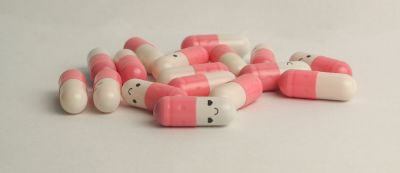What are specifications and why they are needed?

During the development of a new drug product, the quality control (QC) lab(s) must establish specifications for the desired drug and its “surroundings”. Specifications are a list of predefined criteria and their corresponding test methods, which should be applied for analysis. They define a set of criteria to which the material (starting material, intermediate, drug substance, excipients, final drug product, primary packaging materials etc.) should comply in order to be considered for its intended use, thus: specifications are used to evaluate the quality of these materials.
According to the German AMWHV ("Drug Product and API Manufacturing Act" - my translation) specifications are "definitions and requirements which must be met by starting materials or intermediates for the production of drugs or active substances, as well as active substances, pharmaceuticals or tissues and which serve as basis for quality assessment" (my translation of AMWHV §2 (5)).
A draft specification for a new e.g. biotechnological finished drug product can be issued based on scientific knowledge, but it is adopted after the variations for the product in the defined parameters are known (e.g. after the production of few pilot batches and considering the variability of the test methods). For the specifications of starting materials, it is usually not so complicated, since many of the "common" starting materials are included as monographs in the pharmacopoeias, e.g. the European Pharmacopoeia (Ph. Eur.), and thus specifications exist about their requirements, which can then be adopted (± supplemented) or referred to. The specifications of many ("simple") chemical drugs and vaccines that are already listed in the pharmacopoeia are also based on the respective monographs there. Specifications are part of the market authorization application documents (“dossier”) to be submitted to the authorities.
Specifications could be determined for the following processes:
- Starting material specifications: control quality of incoming raw materials and e.g. primary packaging materials
- In-process specifications: control quality of in process intermediates
- Release specifications: control quality of the Active Pharmaceutical Ingredient (API, drug substance) e.g. in case of a drug substance manufacturer / manufacturing site and of the subsequent final drug product
- Stability specifications: control the quality during stability studies (with defined stability-indicating test methods at defined time points during the claimed shelf life of the product)
- etc.
After the (new) drug has been approved by the authorities and is manufactured by the pharmaceutical company, release testing is performed for each batch of manufactured drug product. Therefore, the panel of test methods defined in the specification is used to analyze the (critical) quality attributes (CQAs) of the product. Parametric (a numerical value results from a measurement) and attributive (a comparison against a test plan results in "complies" or "does not comply") tests can be applied. This is done during quality control testing. After testing, a Certificate of Analysis (CoA) is issued by the head of the QC department. A CoA is a documented proof that states the adherence of the product to its specification, by showing the values obtained during quality testing of the batch are within the defined criteria, technically spoken being "compliant”. If this is not the case and you receive results that do not comply with the specification, so-called OOS (= out of specification) results, you’ve got to find the underlying root cause. Further details can be found in this article. And if we don’t want to take a look only after production has finished but also at its beginning or even before, the same applies to the starting materials to be used in production: Prior to manufacturing, samples are taken from all starting materials delivered for each batch, these are analysed as part of the incoming goods inspection using the appropriate test methods, the results obtained are compared with the specification, and only if all requirements are met, the starting materials are allowed to be used for the production of the drug product, and thus are approved for this purpose. The same applies, for example, to the reagents to be used in the test methods, which can be marked as released after their incoming inspection, e.g. by affixing a green label. In most cases, however, it is a bit simpler, as many suppliers already analyse their starting materials or reagents for compliance with the monograph specifications and then provide a corresponding certificate of analysis, which is subsequently simply checked during incoming goods inspection.
To sum up, a specification lists the requirements for a particular material. It shows for which material (and, e.g. if necessary, for which dosage form of the drug product) the specification is applicable and which parameters as well as their limits need to be adhered to. A specification for the drug product – depending on the nature of the product - includes, e.g. amongst others, information about the (protein) content, purity, identity, potency, number of visible and subvisible particles and the test methods with which these parameters have to be tested during release and / or stability analysis.
